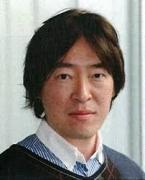Research Experience
-
2018.04-Now
Tokyo Women's Medical University
-
2018.04-Now
Waseda University Faculty of Science and Engineering
-
2017.04-2018.03
Waseda University Faculty of Science and Engineering
-
2013.04-2017.06
イービーエム株式会社 血流解析事業部 部長
-
2014.04-2017.03
Waseda University Faculty of Science and Engineering
-
2013.04-2014.03
Waseda University Faculty of Science and Engineering
-
2011.04-2013.03
Waseda University Faculty of Science and Engineering
-
2009.04-2011.03
早稲田大学先進理工学研究科GCOE 研究助手
-
2007.10-2010.09
CSIRO, Australia Advanced Laser Diagnostic Fluid Dynamics Laboratory Visiting Research Associate
-
2007.10-2009.03
Waseda University Faculty of Science and Engineering Waseda Research Institute for Science and Engineering Research Associate


Click to view the Scopus page. The data was downloaded from Scopus API in July 26, 2024, via http://api.elsevier.com and http://www.scopus.com .